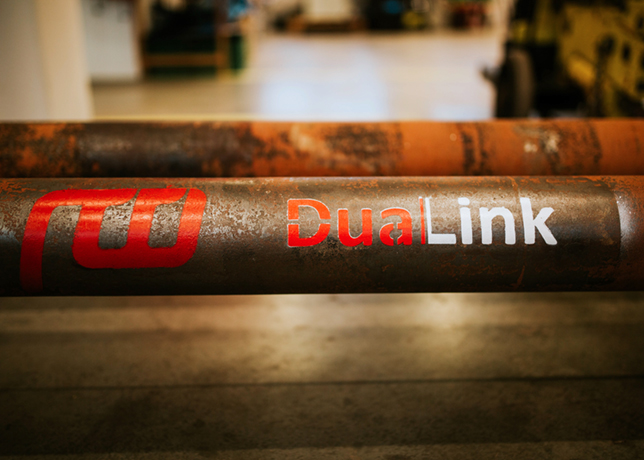
 The DualLink visually explained
The DualLink visually explained
The DualLink system can boost Middle East well safety, efficiency, cutting emissions, risks with high-speed data, power for smarter drilling, completions, interventions, Svein Stromberg, CEO, Reelwell, tells OGN
For decades, the oil and gas industry has sought a reliable way to transmit both high-speed data and power downhole; not just to make more informed decisions, but also for the HSE benefits and improved efficiency it could offer.
That solution is now available with the introduction of Reelwell’s DualLink™.
DualLink is a drill pipe technology designed to transmit real-time data and electrical power between surface systems and downhole tools.
This capability enables unprecedented real-time communication with downhole tools, enhancing decision-making and operational control in complex drilling and well environments.
REAL-WORLD DEPLOYMENTS
Based in Norway, Reelwell specialises in well construction and intervention solutions. Designed to enhance safety, efficiency, and cost-effectiveness while reducing environmental impact, Reelwell’s DualLink is redefining drilling technology for the oil and gas industry.
Field performance has confirmed that the telemetry and power systems are stable and reliable, even under demanding drilling and well conditions.
 |
DualLink transmits real-time data and power between surface systems and downhole tools |
DualLink is currently operational in commercial onshore activity in the US, with offshore deployment on the Norwegian Continental Shelf for Vår Energi planned in the coming months.
Reelwell is also actively engaged in discussions with several major international operators regarding future deployments and field-scale implementations.
PROTECTING THE WELL & PERSONNEL
The system is increasingly relevant for operators in the Middle East who are aiming to improve well delivery while meeting evolving HSE and efficiency goals.
DualLink offers a practical toolset for addressing reliability, efficiency and HSE priorities.
DualLink enhances safety by providing continuous, high-resolution downhole data in real time, along with the power required to operate intelligent tools and systems.
By transmitting pressure, vibration, and ECD information at high bandwidth, it enables early detection of well control issues such as kicks, ballooning, or unexpected formation pressure changes.
Unlike conventional systems that rely on surface indications or delayed mud pulse telemetry, DualLink delivers near-instantaneous insight into downhole conditions.
This allows drilling teams to identify abnormal trends sooner and take proactive action. Early detection of wellbore instability or drilling dysfunctions also reduces non-productive time and improves operational safety.
In remote desert, land, and offshore environments, the ability to reduce the number of personnel at the rig site is another important benefit.
With integrated data and power delivery, DualLink supports remote monitoring, automation, and controlled tool activation - aligning with many operators’ HSE and cost-efficiency objectives.
QUANTIFIED EFFICIENCY & HSE GAINS
According to analysis presented during the OG21 Technology Forum, wired drill pipe systems like DualLink can offer measurable performance gains.
Rystad Energy estimated up to 15 per cent improvement in drilling efficiency and 20 percent increase in production, primarily due to better well placement and identification of bypassed or fractured zones.
These improvements also translate to lower emissions per well. Fewer wells drilled, shorter campaigns, and higher production per well all contribute to a reduction in total carbon intensity.
Further environmental and safety benefits include improved well control due to earlier detection of pressure anomalies, reduced use of single-use batteries, and less need for personnel to travel to and from the rig.
DualLink also opens the door to new applications in completions, plug and abandonment, and wellbore cleanout, where electrically activated tools can improve efficiency and reduce mechanical risks.
POWERING THE NEXT STEPS IN DRILLING TECHNOLOGY
DualLink represents a practical step forward in safe, efficient, and lower-emission drilling and well operations.
This is not just a drilling technology, it’s a platform built to support the full well lifecycle, from drilling through to completions, interventions, and abandonment.
For operators in the Middle East who are pursuing digitalisation and enhanced HSE performance, it offers a proven and scalable platform.
As the region continues to push toward smarter operations, DualLink can play a key role in enabling the next generation of drilling and well technology.
DualLink can deliver up to 2500 watts downhole at present, enabling tools and functionality that simply are not possible with telemetry alone.
Whether it’s active flow control, tool actuation, or high-power sensors, having a reliable power source fundamentally changes what’s technically feasible.
In addition, the system has been designed with built-in redundancy to maximise uptime and meet both current and future operational needs, while also providing a scalable foundation for future downhole advancements.
It is engineered for robustness and reliability and can be handled like standard drill pipe, with rugged connectors and no moving parts, maintaining compatibility with standard drill pipe handling practices and without compromising pipe integrity.
This combination of high-speed data, power delivery, and redundant system architecture enables improved tool functionality, real-time decision-making, and the development of new downhole applications.
It also allows for more efficient rigsite operations, with fewer interventions and reduced reliance on battery-powered tools. In other words, DualLink is literally powering the next steps in drilling technology.
By Abdulaziz Khattak





















































































